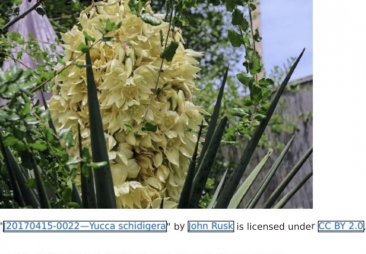 By David R. Shorey, East County Program Manager, Institute for Public Strategies
By David R. Shorey, East County Program Manager, Institute for Public Strategies
May 18, 2023 (San Diego) -- Earlier this month, I had the honor of attending the 2023 National Tribal Health Conference in Anchorage, Alaska. The theme of the weeklong event was “Culture Heals, Culture Knows, Culture Leads” and highlighted the importance of grounding substance use prevention and treatment in American Indian and Alaskan Native (AI/AN) culture.
AI/AN communities have some of the highest rates of substance misuse and addiction in the United States.Contributing factors to these high rates include the historical trauma and ongoing oppression experienced by Indigenous communities. The forced removal from their land, cultural genocide, and the boarding school era are just a few examples of the traumatic events that have had a lasting impact. These experiences have led to a loss of cultural identity, disconnection from their heritage, and increased mental health disorders and substance userates.
 Because some tribal communities are so insular and in small, rural areas, most people know or are related to each other. Isolation can cause reluctance in someone needing it to seek help. Stigma can also help prevent someone from seeking help. Speakers during the National Tribal Health Conference consistently emphasized thattreatment needs to reflect cultural and tribal community context. It needs to assume Native intellect and it must be locally and personally meaningful. Conventional, non-Native treatment may provide temporary relief. But if Native cultural identity and community context are not understood, it likely may not lead to lasting, positive life change.
Because some tribal communities are so insular and in small, rural areas, most people know or are related to each other. Isolation can cause reluctance in someone needing it to seek help. Stigma can also help prevent someone from seeking help. Speakers during the National Tribal Health Conference consistently emphasized thattreatment needs to reflect cultural and tribal community context. It needs to assume Native intellect and it must be locally and personally meaningful. Conventional, non-Native treatment may provide temporary relief. But if Native cultural identity and community context are not understood, it likely may not lead to lasting, positive life change.  Conventional, non-Native providers may not be the appropriate avenue to explore the complexities of Native cultural identity and connectedness. Native partnerships serve this role.
Conventional, non-Native providers may not be the appropriate avenue to explore the complexities of Native cultural identity and connectedness. Native partnerships serve this role.
Another factor contributing to substance use disorder among American Indians and Alaska Natives is the lack of access to resources and opportunities. According to information from the National Congress of American Indians AI/AN communities often lack basic infrastructure such as clean water, adequate housing, and healthcare. This lack of resources can lead to hopelessness and despair, making individuals more susceptible to substance abuse as a coping mechanism.
Substance use treatment experts who spoke during the National Tribal Health Conference said addressing substance use disorders in AI/AN communities requires a holistic approach that addresses the underlying causes of addiction. This includes addressing historical trauma, increasing access to resources and opportunities, and promoting cultural pride and resilience. By addressing the underlying causes of addiction and promoting healing and strength, we can support Native American communities in achieving overall wellness.
East County tribal community members have resources to help them address these issues that are provided by the Southern Indian Health Council based in Alpine. It servesa seven-member tribal consortium which includes Barona, Campo, Ewiiaapaayp, Jamul, La Posta, Manzanita, and Viejas. SIHC is an accredited and Federally Qualified Health Center operating out of a facility set on 10 acres next to the Viejas Reservation, with a diversified funding base. It provides a full spectrum of programs and services.
Curriculums developed by nonprofit organizations like Generation Red Road and White Bison, are dedicated to creating and sustaining grassroots efforts toward providing culturally-based healing to generations of Indigenous People by utilizing Indigenous teachings. This, in turn, can lead to harmony for individuals, families and communities.Part of the screening process is to ask clients how connected they are to their culture with an emphasis on helping them when, and if they are ready and interested to get reconnected with their customs. Some of the culture focused prevention programs include sewing circles, bird singing, Inipi ceremonies and recovery campouts.
Sewing circles are led by an elder and involve making ribbon skirts and shirts for death rituals, funeralceremonies and burial customs. They provide a safe space for talking and sharing while teaching valuable skills and connecting to their culture, handing it down from generation to generation. Bird singing sessions with a tribal elder is another tradition where they sing for all different ceremonies--in mourning and happier times—using gourd rattles. Inipi ceremonies are held in a sweat lodge and are facilitated by a community tribal elder. Intertribal wellness and recovery campouts are also part of the healing process. Getting reconnected with their culture helps those in recovery succeed. Cultural connectivity is a central focus.
 IPS works alongside communities to build power, challenge systems of inequity, protect health and improve quality of life. IPS has a vision for safe, secure, vibrant and healthy communities where everyone can thrive. To find out more about IPS East County, follow us on our social media platforms: IPS East County Facebook, IPS East County Twitter, and East County Youth Coalition Instagram. Our website is at IPSEast.org. Resources and services are available to assist with screening, treatment, and recovery for individuals with a substance use disorder. The Access & Crisis line is available year-round, 24/7 at (888) 724-7240.
IPS works alongside communities to build power, challenge systems of inequity, protect health and improve quality of life. IPS has a vision for safe, secure, vibrant and healthy communities where everyone can thrive. To find out more about IPS East County, follow us on our social media platforms: IPS East County Facebook, IPS East County Twitter, and East County Youth Coalition Instagram. Our website is at IPSEast.org. Resources and services are available to assist with screening, treatment, and recovery for individuals with a substance use disorder. The Access & Crisis line is available year-round, 24/7 at (888) 724-7240.
 IPS East County is funded by the County of San Diego Health and Human Services Agency, Behavioral Health Services.
IPS East County is funded by the County of San Diego Health and Human Services Agency, Behavioral Health Services.


















Recent comments